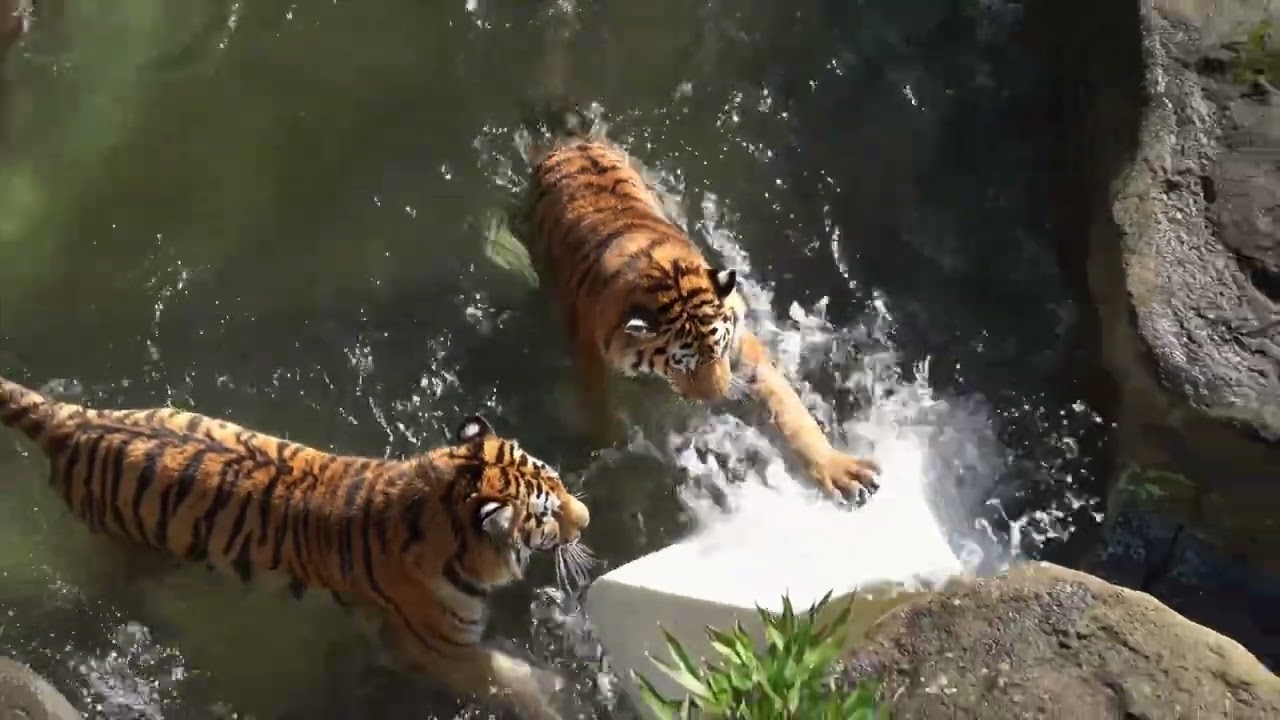– The Amur Tiger: Understanding the Habits and Habitat of the World’s Largest Cat Species
– Pool Fun: How Water Play Benefits the Physical Health and Mental Well-being of Amur Tigers
– Aquatic Prowess: The Unique Adaptations That Make Amur Tigers Skilled Swimmers
The Amur tiger, or the Siberian tiger, is the largest of the tiger subspecies. Their habitat, once sprawling across the Russian Far East, China, and the Korean Peninsula, has become restricted due to human activities. They are an endangered species, with only around 500 to 600 individuals believed to exist in the wild. Their survival has become a crucial focus for conservationists worldwide as they play a critical role in controlling populations of prey species and maintaining ecological balance as apex predators.
Amur tigers have a unique affinity for water that sets them apart from many other big cats. Water play helps keep them cool, strengthens their muscles, and supports their cardiovascular health. Swimming also serves as mental enrichment, stimulating these intelligent creatures in an environment that might otherwise be less challenging than their natural habitat. The webbed paws of Amur tigers give them an edge, as they can paddle more efficiently, making them powerful swimmers capable of navigating rivers and lakes in their historical range.
In the wild, Amur tigers might pursue prey through shallow water or ambush them at watering holes. The toys they attack in the pool are substitutes that allow them to practice the pounce and grab techniques crucial for survival in the wild. While in captivity, such activities help preserve these instincts. Carefully managed programs in zoos can aid in preserving species like the Amur tiger. Captive breeding initiatives work to maintain genetic diversity and to potentially reintroduce tigers into the wild.
The life of an Amur tiger in the wild is one of solitude and constant challenge, while tigers in captivity are provided with consistent food sources and medical care. However, they are also deprived of their full range of natural behaviors like extensive roaming and hunting. Hence, it becomes imperative to mimic the complexities of their natural environment. Zoos must create environments that cater to the needs of these large predators, providing them with the space and enrichment necessary to thrive. Pools like Dmitri and Luka enjoy fantastic examples of enriching habitats that allow tigers to indulge in their natural behaviors.
*****
Source Description
Amur tigers like Dmitri and Luka love to splash in the water. They have strong bodies and webbed paws—great for swimming or attacking their toys!


